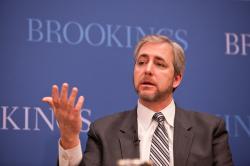American driving habits are changing. After decades of steady increases the growth in driving is clearly leveling off, and dropping on a per capita basis, even at a time when a vast array of public policies continue to support and encourage driving. Perhaps even more amazing are total aggregate declines in some recent years coupled with drops in licensing, trips, and vehicle purchases. These shifts have enormous implications for public policy in the US. Ample evidence shows that this phenomenon is not limited to the US, but is generally reflected in other developed countries around the world with mature transportation systems.
However, this phenomenon is still not well known. When they are recognized, these individual trends are either largely dismissed as economic factors caused by the global recession and stubbornly high unemployment rate. While there is little doubt that the sputtering US economy has major impact, emerging research suggests the changes in US driving habits are also the result of a long-term structural change reflective of a host of shifts in demographics, culture, technology, as well as settlement patterns in US metropolitan areas. A set of public policies also plays a key role.
This paper explores those macro forces through an analysis driving trends, a review of existing literature, and discussion what is likely behind these trends as well as implications for public policy.
Editor’s Note: This discussion paper is part of an International Transport Forum series.
Download the paper here
.


